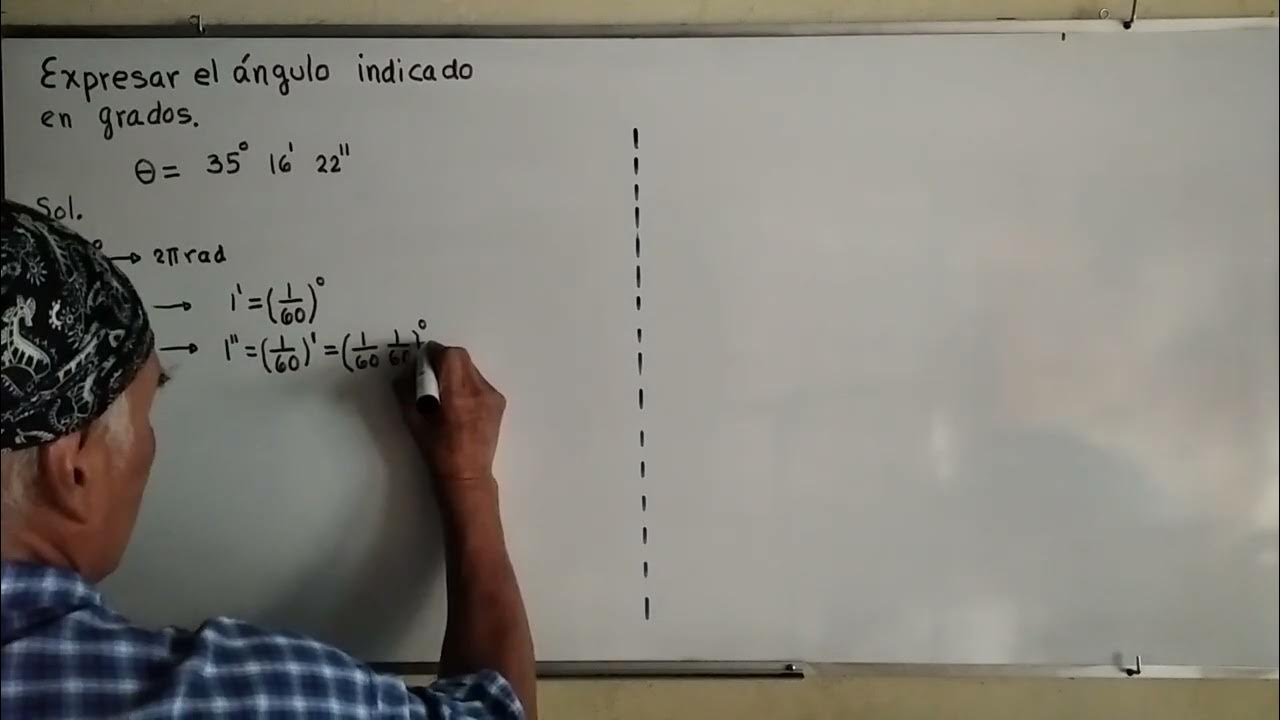Writing a fraction as a repeating decimal
Summary
TLDRThe video script demonstrates the process of converting the fraction 29/37 into a decimal. The presenter explains that since 29 is less than 37, the result will be less than 1. They proceed with a step-by-step long division, illustrating how to place the decimal and handle the zeros. The division shows a repeating pattern of '783', leading to the conclusion that 29/37 is approximately 0.783 repeating.
Takeaways
- 🔢 The process involves converting the fraction 29/37 into a decimal.
- 📉 The presenter acknowledges that the decimal will be less than 1 since 29 is less than 37.
- 📝 The division starts with placing the decimal point and adding zeros to the dividend as needed.
- 🔄 A trial-and-error method is used to determine how many times 37 goes into the dividend.
- 🧮 The presenter demonstrates the division step by step, starting with 37 going into 290 seven times.
- 💡 The division reveals a pattern where the digits 783 repeat indefinitely.
- 🔁 The repeating pattern is indicated by placing a bar over the digits 783.
- 📖 The final result of the division is expressed as a repeating decimal: 0.783783783…
- 🕒 The presenter notes that the problem is tedious due to the repetitive nature of the division.
- 📋 The process is shown to be methodical and systematic, emphasizing the importance of patience in long division.
Q & A
What is the process described in the transcript?
-The process described in the transcript is the long division method to convert the fraction 29/37 into a decimal.
Why is it stated that the result will be less than 1?
-The result will be less than 1 because the numerator (29) is less than the denominator (37), indicating that the fraction represents a value less than one whole.
What is the initial step taken in the long division process?
-The initial step is to place the decimal point and add zeros after the 29 to facilitate the division by 37.
How does the division process begin?
-The division begins by determining how many times 37 goes into 290, which is found to be 7 times.
What is the first non-zero digit in the decimal part of the result?
-The first non-zero digit in the decimal part of the result is 7, as 37 goes into 290 seven times.
What is the remainder after the first subtraction in the division?
-The remainder after the first subtraction is 31, which is obtained after subtracting 259 (7 times 37) from 290.
How does the division process continue after the first subtraction?
-The process continues by bringing down another zero to make 310 and then determining how many times 37 goes into 310, which is found to be 8 times.
What pattern is observed in the division process?
-A repeating pattern of the digits 783 is observed in the division process, indicating that the decimal will be a repeating decimal.
How is the repeating decimal represented in the transcript?
-The repeating decimal is represented by placing a line over the digits 783 to indicate that they repeat indefinitely.
What is the final decimal representation of 29/37 mentioned in the transcript?
-The final decimal representation of 29/37 mentioned in the transcript is 0.783 repeating.
Why is the process described as tedious?
-The process is described as tedious because it involves multiple steps of division, subtraction, and bringing down zeros, which is repetitive and can be time-consuming.
Outlines

هذا القسم متوفر فقط للمشتركين. يرجى الترقية للوصول إلى هذه الميزة.
قم بالترقية الآنMindmap

هذا القسم متوفر فقط للمشتركين. يرجى الترقية للوصول إلى هذه الميزة.
قم بالترقية الآنKeywords

هذا القسم متوفر فقط للمشتركين. يرجى الترقية للوصول إلى هذه الميزة.
قم بالترقية الآنHighlights

هذا القسم متوفر فقط للمشتركين. يرجى الترقية للوصول إلى هذه الميزة.
قم بالترقية الآنTranscripts

هذا القسم متوفر فقط للمشتركين. يرجى الترقية للوصول إلى هذه الميزة.
قم بالترقية الآنتصفح المزيد من مقاطع الفيديو ذات الصلة
5.0 / 5 (0 votes)






